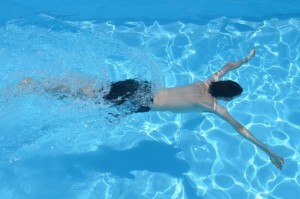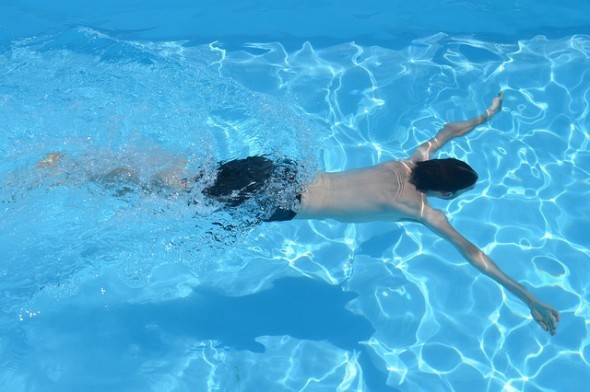
A new study suggests pharmaceuticals and chemicals from personal care products end up in swimming pools, possibly interacting with chlorine to produce disinfection byproducts with unknown properties and health effects. Researchers detected DEET, the active ingredient in insect repellants; caffeine; and tri(2-chloroethyl)-phosphate (TCEP), a flame retardant in some swimming pools. Some chemicals are volatile, which means they can escape into the air to be inhaled. Others can be ingested or absorbed through the skin.
“The whole motivation for examining pharmaceuticals and personal care products is that there is this unknown potential for them to bring about undesired or unexpected effects in an exposed population,” said Ernest R. Blatchley III, a professor with a joint appointment in the Lyles School of Civil Engineering and the Division of Environmental & Ecological Engineering at Purdue University. “There are literally thousands of chemicals from pharmaceuticals and personal care products that could be getting into swimming pool water.”
A research group led by Ching-Hua Huang, a professor in the School of Civil & Environmental Engineering at the Georgia Institute of Technology, has developed an analytical technique that identifies and quantifies 32 pharmaceuticals and personal care products in water.
“Because Professor Huang had already developed an analytical method, which is a non-trivial effort, we thought, ‘why not use it and see what we find in swimming pools?” said Blatchley, working with Huang …
Chlorination is used primarily to prevent pathogenic microorganisms from growing. But previous research has shown that many chemicals — including such constituents of urine as urea, uric acid, and amino acids — interact with chlorine to produce potentially hazardous byproducts in swimming pools. The latest study suggests chemicals from drugs and consumer products products are adding to that potential toxic mix.
The findings, detailed in a research paper published in the journal Environmental Science and Technology Letters, flagged 32 chemicals including three — N,N-diethyl-m-toluamide, known as DEET, the active ingredient in insect repellants; caffeine; and tri(2-chloroethyl)-phosphate (TCEP), a flame retardant — that could be harmful at low concentrations.
Please Read this Article at NaturalBlaze.com





Leave a Reply